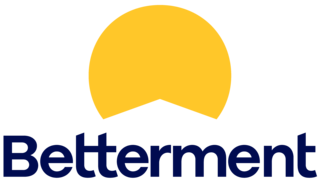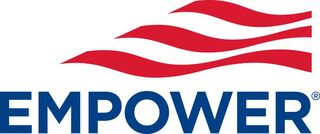7 Best Robo-Advisors
Rankings as of Aug 05, 2024.
Money is not a client of any investment adviser featured on this page. The information provided on this page is for educational purposes only and is not intended as investment advice. Money does not offer advisory services.
Robo-advisors are a convenient and cost-effective option to save and invest your money. These automated investment services use algorithms that employ advanced portfolio management strategies developed by experts.
They’re also a great option if you prefer a more personalized and hands-off approach to investing over the time-consuming task of managing your own self-directed brokerage account.
Each platform typically offers distinct features, financial planning tools and performance for different types of investors, which can make it challenging to choose the right one for your portfolio and investment goals.
Read on our reviews for the best robo-advisors of 2023 and a guide on how to invest using these investment platforms.
Our Top Picks for Best Robo-Advisors
- Wealthfront: Best Overall
- Betterment: Best Robo-Advisor for Tax-Loss Harvesting
- SoFi Invest: Best All-in-One Robo-Advisor
- Fidelity Go: Best Hybrid Robo-Advisor
- M1 Finance: Best Brokerage Account with Auto-Investing
- Acorns: Best Robo-Advisor for Beginners
- Empower: Best Robo-Advisor for High Net Worth
Best Robo-Advisors Reviews
- Offers individual stock investing
- Tax-loss harvesting capabilities
- Free financial planning tool
- $500 minimum for automated investing account
- No access to human advisors
Why we chose it: Wealthfront is our pick for Best Overall because it offers comprehensive financial planning tools, tax-loss harvesting, a variety of investment accounts and the ability to trade individual stocks at a relatively low fee.
Wealthfront is well-equipped to help you reach your long-term goals thanks to an algorithm called Path. Developed by a team of PhDs, Path does the calculations to let you know how to reach life goals such as paying off your home, saving for college education and retirement.
To make the most out of this tool, you must link your financial accounts. With that information at hand, the algorithm will make projections and recommend steps to achieve your financial goals. Wealthfront’s Path is available to customers even before they start investing.
This robo-advisor requires a $500 account minimum and charges a 0.25% annual advisory fee of your balance.
Depending on your risk tolerance, Wealthfront offers 20 different portfolios with investment options consisting mostly of low-cost exchange-traded funds (ETFs), along with real estate, foreign stocks, among others. Rebalancing is not done regularly. Instead, the algorithm determines if a rebalance is necessary to stay on track with the investment strategy. Also, with tax-loss harvesting performed daily, Wealthfront makes it a point to strive for tax minimization.
Wealthfront lets you hold a self-directed brokerage account so you can handle trades and invest in individual stocks and ETFs. You can also buy fractional shares without account fees or commissions.
- Easy account set-up
- No minimum account balance
- Includes cryptocurrency investing, high-yield cash accounts and checking accounts
- $4 monthly fee on balances under $20,000
- $100K minimum balance for its Premium tie
- Doesn't support 529 accounts or custodial accounts
Why we chose it: Betterment makes it easy to set up managed portfolios for multiple goals while including tax-loss harvesting and access to personal finance experts.
If complicated enrollments are deal breakers for you, Betterment offers a user-friendly process, ideal for beginner investors who want to get started with a small amount and have access to financial goal-setting and retirement-planning tools.
Setting up an account is relatively straightforward, with the usual risk-related questionnaire substituted by asset allocation suggestions. After that, you can adjust your risk tolerance as you see fit. Also, Betterment’s platform is sufficiently intuitive that it will let you know if any changes will impact your taxes.
Betterment’s robo-advisor doesn’t have an account minimum; however, there is an ACH deposit minimum of $10 to get started. The company charges $4 per month or a 0.25% management fee. However, in order to qualify for the 0.25% management fee, you must schedule an automatic monthly deposit or transfer of $250, or you must hold a total of $20,000 across all your Betterment accounts — including Cash Reserve and Crypto. The company also offers responsible investing through one of its portfolio options.
For an additional 0.15% fee, you can get in-depth investment advice from a team of certified financial planners (CFPs) under Betterment's premium plan. However, you’ll be required to maintain a minimum balance of $100,000.
Betterment also offers a chance to look into their portfolios' historical returns going back 15+ years. This allows you to evaluate their long track record and decide if Betterment is the right investment platform for you.
- Banking products and active investing is available
- Automatic rebalancing
- Tax-loss harvesting is not available
- Doesn't support 401(K) accounts
Why we chose it: SoFi Invest offers access to a robo-advisor along with self-managed brokerage accounts and banking products.
If you’re looking for a robo-advisor that has a lot to offer, SoFi puts low-cost ETFs within your reach along with free access to traditional human advisors and investment planning.
Furthermore, SoFi offers free career coaching and tools through its talent management partner, Korn Ferry Advance. The lack of fees coupled with the educational resources makes this robo-advisor stand apart from its competitors.
SoFi’s Automated Investing requires a $50 account minimum and an annual advisory fee of 0.25%.
SoFi’s Automated Investing offers the choice of five different investment strategies with varying degrees of risk, ranging from conservative to aggressive. If you’re a new investor and you’re unsure which strategy will work for you, just answer a questionnaire relating to your income and goals, and SoFi will recommend a strategy that fits your needs and risk tolerance.
SoFi’s robo advisor also offers automatic rebalancing to help you maintain a diversified portfolio and reach the asset allocation that better aligns with your goals. However, unlike other competitors, SoFi’s Automated Investing doesn’t employ tax-minimizing strategies which can be a drawback if you’re looking to boost your tax returns.
- No advisory fees for accounts under $25,000
- No minimum to open account
- Seamless integration with other Fidelity accounts
- Solid customer support
- No tax-loss harvesting
- Doesn't offer custodial accounts or 401(K)
- Financial advisors are exclusive for accounts over $25,000
Why we chose it: Fidelity Go is a hybrid robo-advisor that includes one-on-one financial coaching with experts for investors with account balances over $25,000.
Fidelity Go is an affordable robo-advisor from the renowned online broker Fidelity Investments. The platform offers both individual and joint taxable accounts and some retirement options, including Traditional, Roth and Rollover IRAs.
Fidelity Go doesn’t charge trading fees, transactions fees or rebalancing fees. In addition, there are no advisory fees for investors with balances under $25,000. However, a 0.35% annual advisory fee applies to account balances of $25,000 or more.
While this fee is higher than the 0.25% of Betterment and Wealthfront, it may be worthwhile considering you also get access to personal financial coaching and one-on-one phone sessions with trained advisors. You also need a lower account balance than with Betterment, which requires a minimum of $100,000 and charges an additional 0.15% in order to get support from a certified professional.
Like most robo-advisors, Fidelity Go is an online financial service that creates portfolios based on your investment goals and preferences. Portfolios are mainly built using a combination of Fidelity Flex mutual funds — broadly diversified funds with no expense ratio. These funds include U.S. domestic stocks, foreign stocks and bonds from small, mid and large-cap companies.
- No trading or management fees
- Ability to trade individual stocks and fractional shares
- $50 inactivity fee for accounts with no trading or deposit activity during a 90-day period
- Limits trades to two trading windows
Why we chose it: M1 Finance offers all the perks of setting up automatic investing combined with high customizability, ideal for long-term buy and hold portfolios.
Unlike other companies on this list, M1 lets you build your portfolio using any combination of individual stocks and low-cost ETFs. This affords you a level of control that is rare in the robo-advisor market.
After choosing your investment portfolio — or let the company choose for you — M1's algorithm will execute trades on your behalf. The advantage is that you can decide your level of involvement and let the technology handle the rest.
The platform features visual representations to help you better understand how your portfolio is working. Using pie charts, you can visualize how your investments are distributed and how well they’re performing. While the pie is designed to run on its own, you can make adjustments as you see fit and add more funds to your portfolio at any time.
You can also sell or buy specific stocks, however, M1 limits trades to two trading windows: one in the morning at 9:30 am (ET) and another in the afternoon at 3:00 pm (ET). Afternoon trades are only available for premium members, which costs $10 a month.
M1 doesn’t offer tax-loss harvesting, but all its accounts have access to a tax minimization feature which helps lower your tax liability after selling securities. It accomplishes this by arranging the sale of securities in increasing order of their tax burdens.
M1 Finance requires an initial minimum deposit of $100 to open an individual brokerage account and a minimum total balance of $500 for its retirement accounts — Traditional IRA, Roth IRA and SEP IRA. M1 doesn’t charge management fees, however there are some account services fees to consider, such as inactivity fees, termination fees and wire transfer fees.
- Rounds up purchases and invests the difference
- Portfolios range from conservative to aggressive
- Offers rewards when you shop from specific brands
- More expensive than similar services
- Tax-loss harvesting is not available
Why we chose it: Acorns is a simple, user-friendly mobile app that requires minimal setting up and lets you start investing with just one dollar.
One of Acorns' most useful features is the ability to link debit and credit cards to the account and round up all purchases to invest your spare change.
You can also specify a monthly amount to be deducted from your checking or savings accounts and invested through Acorns. This means you can "set it and forget it." The best part is that you can get started with a small sum of money.
Acorns has three different subscription tiers: Personal, Personal Plus and Premium which have a monthly fee of $3, $5 and $9, respectively. These fees are more expensive than other robo-advisors. This can really be a drawback if you’re planning to invest small amounts since it can add up over time and reduce your returns.
However, a fixed monthly fee like Acorns’ may be cost-effective if you’re planning to invest large amounts. Say you were to invest $20,000 in a year. With Acorns’ most basic plan you would pay a total of $36 a year, whereas with a robo-advisor like Wealthfront, which charges a 0.25% annual fee of your balance, you would pay $50.
Acorns offers five types of portfolios, ranging from conservative to aggressive. You can either choose a type of portfolio or let Acorns recommend one. Once you’re set, you can only invest within that particular portfolio. While it offers little customization, the convenience and simplicity of the Acorns investing platform should incentivize you to not only invest but also remain hands-off.
- Unlimited access to human financial advisors
- Financial planning tool included
- Tax optimization aimed at minimizing tax liability
- Very high account minimum, at $100,000
- High fees at 0.89% for portfolios under $1 million
Why we chose it: Empower, formerly Personal Capital, is an investment management service that offers a hybrid approach ideal for high-net-worth investors who want unlimited access to traditional human advisors.
With Empower Personal Dashboard, you get the chance to both automate and be hands-off with your investments, all while relying on the expertise of advisors who can weigh in on the nuance of your particular financial situation.
That said, Empower caters to high net worth individuals who have the means to invest over $100,000. If you’re a novice investor with a humble balance, you might consider looking elsewhere for your automated investment needs.
Empower’s robo-advisor requires a $100,000 account minimum and charges an annual fee of 0.89% of your assets for accounts of $1 million or less. Customers with higher balances are charged less, with fees ranging between 0.79% and 0.49%. The lowest fee, however, is only available to investors with $10 million or more in investment assets.
Tax optimization is a part of Empower’s investment plan. It involves tax-loss harvesting, allocating assets where they’ll be less taxable and choosing the most efficient investment vehicles to minimize taxes. The result is higher returns with less tax liability.
Also, Empower offers three tiers of service depending on your balance: Investment Services ($100K to $250K), Wealth Management ($250k to $1 million) and Private Client (over $1 million).
Other companies we considered
The following robo-advisors were also considered, but they didn’t make it to our final cut. However, some offer services and features that you may find helpful depending on your investment goals.
Vanguard Digital Advisor
- Low annual advisory fee
- Access to Vanguard's investing infrastructure and expertise
- Account minimum is $3,000
- No tax-loss harvesting
- No access to human advisors
Why it didn’t make the cut: Vanguard Digital Advisor is a low-cost robo-advisor that’s easy to use and a great option for retirement accounts; however it lacks tax-loss harvesting and access to financial advisors, which other competitors include.
With Vanguard Digital Advisor you can open individual brokerage accounts, individual retirement accounts (IRAs) and 401(k)s. This fully automated robo-advisor relies solely on its tech to deliver results without any input from traditional human advisors.
While the service doesn't include human advisors, Vanguard Digital Advisor offers customer support via phone during business hours and across social media platforms. In addition, it requires a $3,000 account minimum and charges an annual advisory fee of 0.20% to 0.25%.
Schwab Intelligent Portfolios
- No management fees or commissions
- Access to certified financial planners for Premium accounts
- 24/7 customer support
- Requires $5,000 to start investing
- Tax-loss harvesting only available for accounts with $50,000 or more
- $30 monthly advisory fee for Premium
Why it didn’t make the cut: Schwab Intelligent Portfolios have higher account minimums and only offers tax-loss harvesting for investors with at least $50,000 in assets.
Charles Schwab is a well-known discount broker that offers a variety of investment products and services, including automated investing. Schwab Intelligent Portfolios feature no management fees or commissions, but require a $5,000 account minimum.
Guidance from certified financial planners is available through Schwab Intelligent Portfolios Premium, which has a $25,000 minimum (this is lower than the $100K balance Betterment requires.) However, the cost is a one-time $300 planning fee plus a $30 monthly advisory fee. This fee is considerably higher than most robo-advisors in our top list, but it may be an option if you’re investing large amounts and prefer a flat fee over paying a percentage of their balance.
Ellevest
- No account minimum
- Offers multiple financial services tailored to women
- Features tax minimization and automatic rebalancing
- Monthly plan cost $12
- Only offers two portfolio options
- Doesn't offer joint accounts
Why it didn’t make the cut: Ellevest stands out for its goal-based investing tools, however its portfolio options are limited compared to other platforms.
Ellevest is an automated investing platform created by women and designed for women. The platform’s goal-based algorithm considers key gender-specific differences, such as salary curves and lifespans, for its portfolio recommendations and diversification strategies.
While anyone can open an account, Ellevest’s services are tailored to help women save and invest. This includes access to personalized planning and wealth management with financial experts, albeit for an additional cost.
However, Ellevest’s plan costs $12 per month, a fee that’s relatively high compared to other robo-advisors.
E*Trade Core Portfolios
- Access to socially responsible investing portfolios
- Strong customer support with a dedicated team available over the phone
- Offers tax-efficiency features
- 0.30% annual advisory fee is high compared to other competitors
- No tax-loss harvesting
Why it didn’t make the cut: E*Trade is a comprehensive online stock trading platform that pairs managed portfolios and strong customer service, although for a relatively higher annual management fee.
E*Trade by Morgan Stanley is an intuitive, easy-to-use investment platform that offers stock trading and automated investing. Like other auto-investing solutions, E*Trade Core Portfolios uses your investment objectives, time horizon and risk tolerance to customize and manage your portfolio.
The platform also stands out for its dedicated team of specialists which is available over phone on weekdays from 8:30 a.m to 8:30 p.m. ET. However, E*Trade requires a $500 minimum account balance and charges an annual advisory fee of 0.30%, which is relatively higher than other robo-advisors.
Ally Invest Robo Portfolios
- Integration to Ally's banking products
- Offers self-directed trading
- 24/7 customer support
- No fees for "cash-enhanced" portfolios
- "Market-focused" accounts have a 0.30% annual advisory fee
- No tax-loss harvesting
Why it didn’t make the cut: Ally Invest is a one-stop platform ideal for beginners and Ally customers, however it requires a 30% cash reserve or a 0.30% annual advisory fee.
With Ally you can choose between self-directed trading, robo portfolios and wealth management services. Ally Invest Robo Portfolios are built using a mix of low-cost ETFs and include socially responsible and tax-optimized options. However, there is a 0.30% annual management fee and a $100 minimum investment requirement.
Investors who want to avoid the annual advisory fee must agree to permanently set aside 30% of their balance in an interest-earning account, similar to a high-yield savings account. While a feasible option for more conservative investors, this may be a drawback if you’re looking to invest all your funds.
Robo-Advisors Guide
Read our guide to learn more about robo-advisors, how they work and how to invest using these platforms.
What is a robo-advisor?
Robo-advisors are digital platforms that provide automated investment management services using algorithms and mathematical models. These platforms generally require little to no human intervention, which makes them easy to use and a low-cost solution for new investors looking to access the markets and grow their personal finance.
“The two biggest pros of robo-advisors are the costs and the minimums,” says David Goldstone, Manager of Research at Backend Benchmarking. “They have expanded access to financial advice to large swaths of the population. Young and lower-wealth investors can access professional management and set up a basic financial plan that puts them on track to reach longer-term goals.”
Most robo-advisors are designed to build personalized portfolios, find growth opportunities and rebalance portfolios based on your financial goals and risk profile. Depending on their capabilities and level of sophistication, they may also enable features like tax-loss harvesting and dividend reinvestment.
Some popular robo-advisors also include access to dedicated financial planners. These are often known as hybrid robo-advisors, and can be a great solution for investors who want personalized financial advice and one-on-one guidance.
How do robo-advisors work?
Robo-advisors work on your investments according to your particular needs, budget, and risk tolerance.
After signing up, you typically need to complete a questionnaire about your income, financial situation, time horizon and other relevant information. Based on your responses, the robo-advisor will create your investor profile and set you up with a diversified portfolio that reflects your goals. It will then monitor the market in search of opportunities to buy and sell assets to help you meet those goals.
Most robo-advisors also take care of rebalancing your portfolio and adjusting asset allocation as needed. Some may include other features such as financial planning tools, socially responsible investing and tax-loss harvesting to help minimize your tax liability.
Robo-advisor investing
There are a few dozen robo-advisors to choose from, typically tailored to investors with specific needs and goals. Here are some key points and factors to understand about robo-advisor investing.
Make sure the robo-advisor meets your needs
Robo-advisors create portfolios using varying investment vehicles, such as stocks, ETFs, mutual funds and socially responsible investments. Most robo-advisors, however, typically use a mix of ETFs and index funds from various brokerages to build your portfolio. If you have a specific investment strategy in mind, make sure to evaluate whether the robo-advisor’s offering matches your preferences and goals.
Consider the types of accounts the robo-advisor supports. Some common options include individual brokerage accounts, joint accounts, IRAs (Traditional, Roth or SEP), 401(k) rollovers and custodial accounts (UTMA/UGMA). Many of these accounts offer particular benefits that can better accommodate your needs, especially if you have specific tax considerations or investment goals.
In addition, determine the level of customization and control the robo-advisor offers. Because your goals may change over time, look for platforms that provide more flexibility and allow you to make adjustments to your portfolios or choose individual securities.
Check the fees
Most companies that provide robo-advisor services charge annual management fees, typically consisting of 0.25% to 0.50% of your assets. Some charge upwards of 0.80%. It’s also worth noting that some financial institutions charge zero management fees.
“Lower management fees are a good thing,” says Goldstone. “The fees you pay are one of the largest drivers of the long-term performance of most accounts. [That’s why] management fees play a significant role in the long-term returns of an account,” he added.
If your robo-advisor offers the option of occasionally consulting with a traditional advisor, naturally, the management fee will be higher. Depending on your particular provider, management fees may be charged monthly or quarterly and prorated in some cases.
Consider robo-advisors with tax-loss harvesting
Robo-advisor tax-loss harvesting aims to help investors pay the least amount of taxes while staying within the guidelines put forth by the Internal Revenue Service (IRS).
Tax-loss harvesting is achieved through the automated sale of securities in a portfolio. These sales incur losses that offset gains on other investments that would be taxed under different circumstances.
Essentially, by harvesting tax losses, an investor reduces their taxable capital gains and, as a result, reduces their tax liability.
With some robo-advisors, tax-loss harvesting is performed automatically because the algorithm is designed to look for these opportunities at all times. This gives robo-advisors an advantage over traditional human advisors.
“With the introduction of automation and technologies that robo-advisors are using,” says Goldstone, “it's now possible to automatically detect those situations, sell positions at a loss, and harvest that loss whenever it happens, as opposed to just looking once a quarter or once a year for these types of opportunities.”
How to use a robo-advisor
Most robo-advisors have intuitive interfaces which makes it easy to use them and set up an account. Using a robo-advisor will typically involve the following steps:
- Complete the profile questionnaire: Once you’ve created an account, robo-advisors will assess your level of risk tolerance and financial background through an online questionnaire. It may ask for your income, bank information, estimated time horizon and total assets.
- Select a portfolio: Aside from general investing, most robo-advisors offer pre-built portfolios based on goals, such as saving for retirement, funding education, building an emergency fund or buying a house.
- Fund your account: Determine how much you want to invest and link your bank account. Some platforms use third-party services like Plaid to automatically link and validate your account. Others may require you to manually link your account using a bank account and routing number, which usually takes one to two business dates to validate. You can also set up recurring investments on a daily, weekly or monthly basis.
- Monitor performance: Once you start investing, keep an eye on your portfolio’s performance and track your progress. Most robo advisors provide online dashboards and mobile apps that allow you to monitor your investments easily.
- Read the educational resources: Take the time to learn how robo-advisors, and investing in general, work. Most robo-advisors include educational resources you can explore and use to enhance your skills and investment knowledge. Some include financial planning tools as well.
- Seek professional advice if needed: Complex financial situations may require the guidance of a dedicated advisor. If that is the case, look for robo-advisors that provide access to personalized advice. You may also consider hiring a certified financial planner.
How much can you make with a robo-advisor?
The potential returns you can make with a robo-advisor depend on several factors, including the performance of the investment portfolio, the fees charged by the robo-advisor, the amount of money you invest and the length of time you stay invested. As with most investments, your returns can be affected by systematic risk, such as fluctuations on interest rates and price volatility.
Best Robo-Advisors FAQ
Are robo-advisors worth it?
Your decision should ultimately correspond with your financial situation and goals. For instance, investors who have a more complicated financial situation and a higher net worth may require a portfolio tailored to their specific needs. In some instances, personal advisor services can better meet this need for customization.
How much money can you make with robo-advisors?
What are hybrid robo-advisors?
These human advisors can provide additional support, consultations, financial advice and guidance. Depending on the platform, access to this service may come with an additional cost or require that you invest higher amounts.
How does a robo-advisor decide how to allocate your investments?
How We Found the Best Robo-Advisors
When evaluating the best robo-advisors, we considered the following factors:
- Types of accounts: We preferred robo-advisor services that offer a variety of account options, including individual brokerage accounts, retirement accounts, custodial accounts and 529 plans.
- Fees: We compared management fees with the platform’s features to determine cost-effectiveness. When possible, we favored robo-advisors with lower fees.
- Account minimums: We selected robo-advisors with low to no account minimum requirements. With the exception of Empower, which is tailored to high-net-worth investors, all of our top picks have minimums between $0 and $500.
- Tax optimization: We looked for platforms with tax optimization, be it through tax-loss harvesting or other tax-minimization strategies.
- Customer service: We preferred robo-advisors with multiple customer support options, including help over phone, chat or email.
Summary of the Best Robo-Advisors of 2023
- Wealthfront: Best Overall
- Betterment: Best Robo-Advisor for Tax-Loss Harvesting
- SoFi Invest: Best All-in-One Robo-Advisor
- Fidelity Go: Best Hybrid Robo-Advisor
- M1 Finance: Best Brokerage Account with Auto-Investing
- Acorns: Best Robo-Advisor for Beginners
- Empower: Best Robo-Advisor for High Net Worth









